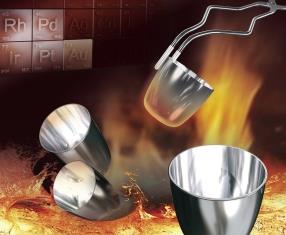RAVINDRA HERAEUS P.LTD
Featured Products
Highest quality standards are achieved through the implementations of latest technology, decades of experience and everlasting moral values , which have helped us to retain our customers as well as multiply them.
Welcome to RAVINDRA HERAEUS P.LTD
Catalytic Gauzes
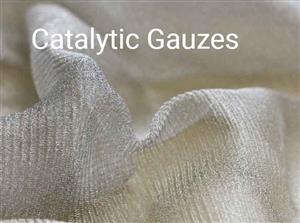
Catalytic systems are widely used for industrial ammonia oxidation and hydrogen cyanide as well as caprolactam production. It is our endeavor to achieve constant improvement through close cooperation with our customers before, during and after the use of our products. For this we offer you the additional services such as on-site support and campaign analyses.
Nitric acid is a major basic chemical widely produced throughout the world. It is the basis of ammonium nitrate fertilizer production, nitrate explosive production and various other complex acid products. Furthermore, Ravindra Heraeus has developed primary, secondary and tertiary catalytic solutions to reduce N2O emissions significantly. The main application field is in nitric acid plants, where large amounts of N2O, commonly referred to as laughing gas, are set free.
Hydrogen Cyanide is manufactured using the Andrussow process, where air, ammonia and methane are reacted on a Platinum gauze system. Cyanide is used widely in the nylon and acrylic glass industries, as well as being used for the heap leaching process in mining.
Caprolactam and Hydroxylamine are intermediate compounds in the production of synthetic polyamide fibres. Although the process types can differ in detail for various technologies the first stage in this process is always an as efficient as possible oxidation of ammonia into nitrogen monoxide. Platinum-Rhodium catalyst gauzes are the best of choice to establish a high efficiency in this process step.
Glass Making Equipment
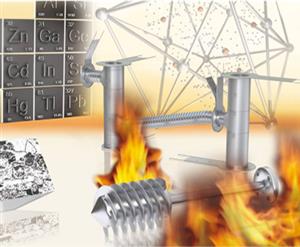
Producing Economically – Even with Precious Metal
Producing economically with components made of precious metals – at first glance that appears to be a contradiction in the field of glass making. However, many of our customers have already achieved a good relationship between total costs and value, and now use precious metal components on a large scale.
Precious metals are, without question, expensive. Furthermore, the prices develop dynamically, so that the use of precious metals requires a certain degree of management – with corresponding effort.
However, precious metal components are very durable and give the plant user the possibility of optimizing production by reducing downtime and unplanned set-up and changeover times. At the same time the risk of defective products can be minimized and an improvement in specific quality characteristics of the customer’s products can be achieved. And best of all the precious metal can finally be recycled and reused in new components.
Thus, the use of precious metal can be an economic proposition for you.
The correct choice of material is of decisive importance in this matter, as precious metal components have to withstand differing conditions. Components that have to maintain their shape when exposed to continual static loads require high strength materials with a high degree of resistance. On the other hand, in fields with many temperature changes and thus changes in loading, material properties such as high elasticity at high temperatures are required. All components, however, require high stability of the weld joints and high resistance to corrosion by aggressive media. Therefore, all customers, not just those with special requirements, set high demands on the component manufacturer regarding expertise, material portfolio, material quality, production techniques and global presence. And the customer can let his competent partner look after the expensive management of his precious metal professionally.
With the right partner and the right material everything can be obtained from one source: from purchasing the raw material and manufacturing the component, including financing and coverage of risks, together with recycling and reimbursement. This circuit reduces effort and tied capital to a minimum.
Optimizing the Glass Quality
Manufacturers who wish to distinguish themselves require more than just standard properties. Anyone who knows the high demands in processing standard glasses can imagine the challenges posed by glasses with special properties.
Optical glasses must be free from discolorations and must demonstrate high transparency and good homogeneity. The quality can be characterized by parameters such as the specific refractive index. Glasses for displays are further optimized to give high scratch resistance and mechanical bending strength. Other demands are imposed on medical glasses for analytical and pharmaceutical applications, e.g., hydrolytic resistance or good resistance to acids or alkalis. Tableware has its own challenges. It should be sparkling, heat resistant, dishwasher resistant and should be unbreakable even with very thin wall thicknesses. Glass fibers require a high softening temperature and high strength and corrosion resistance in order to stand up to the high demands of insulating materials, fiber reinforcement, glass fiber armoring or flame protection. The list of requirements is almost infinite.
Wastage of the valuable glass finished product can, among other means, be reduced by avoiding ceramic particles from refractories, as these often lead to inclusions and thus to glass which cannot be used for the intended purpose. Undesirable striae and bubbles can be reduced by efficient homogenization at ever higher temperatures. New glass compositions also frequently require higher processing temperatures, causing increasingly severe corrosion of the refractories. These negative effects can be significantly reduced by using platinum lined ceramics as well as crucibles, stirrers, pipe systems and nozzles made from platinum alloys.
For this purpose our customers require components that are made from just the right material to meet their requirements. The optimum result requires a broad portfolio of alloys, comprehensive manufacturing capabilities, many years of experience and high technical competence in advising customers
Pgm Solutions And Salts
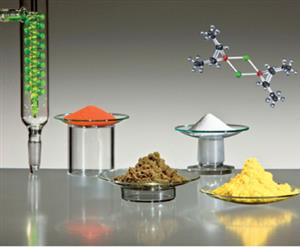
Description / Specification of Pgm Solutions And Salts
We are involved in offering a wide range of Pgm Solutions And Salts to our most valued clients. Our range of these are widely appreciated by our clients which are situated all round the nation. We offer our range of it at most affordable prices.
We introduce ourselves as an eminent trader and supplier of an extensive array of Pgm Solutions And Salts. Prior to dispatch, our quality controllers run numerous tests on the entire range on various parameters of quality and durability. The offered equipment is manufactured using superior quality components with the aid of sophisticated techniques at the vendors' end. Moreover, our precious clients can purchase it in different technical specifications at reasonable price from us within promised time frame.
Features:
Sturdy design
Highly durable
Application specific design
Platinum Electrodes
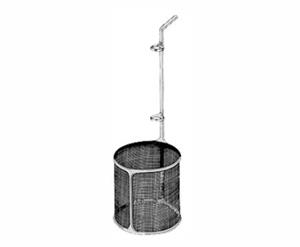
For quantitative electro-chemical analysis in laboratories, Platinum Electrodes of various types are used. Generally, Electrodes are made of platinum 10% Iridium alloy for added mechanical strength which ensure long period of trouble free service. Electrode cylinders are usually made of wire gauze having wire diameter 0.15 mm * 360 mesh per cm2. This provides greater surface than area equal weight of plain or perforated platinum sheet and allows the electrolyte to circulate much more freely. Wherever agitation of electrolyte is required in order to save time of deposition, one of the rotating type of electrode is used.
For most electro-chemical analysis, wire gauze cathode is most satisfactory while a small size of similar anode is used if an anode deposit is required.
A simple helix of wire with stem is an adequate anode where there is no anodic deposit or when determining is not more than 0.2 percent lead as lead peroxide.
If desired, we can manufacture Platinum 10% Iridium electrodes to customers'own specifications to meet their special needs.
Care and Maintenance
A word of caution or care and maintenance of electrodes, more particularly wire gauze electrodes which are quite delicate compared to other Platinum ware.
- Vigorous shaking should be avoided.
- After electrolysis and weightments, the deposits are removed by dissolving in single acids without any damage to the electrodes.
- Before re-use the electrodes should be cleaned with distilled water followed with drying around 100 C.
- When determining Zinc, tin, lead, cadmium or mercury content by cathodic deposition, a prior electro deposit of copper or silver is recommended to avoid alloying with platinum.
Electrodes
Based on original design by Fischer, the following electrodes are used in stirred or unstirred electrolytes. The coil type (helical) anode is used when no anodic deposition is required or when determining less than 0.2 percent lead as lead peroxide.
Our Vision
* To embrace new technologies and methods. * To give unsurpassed products and services to the clients. * To constantly look for improvement and changes.




